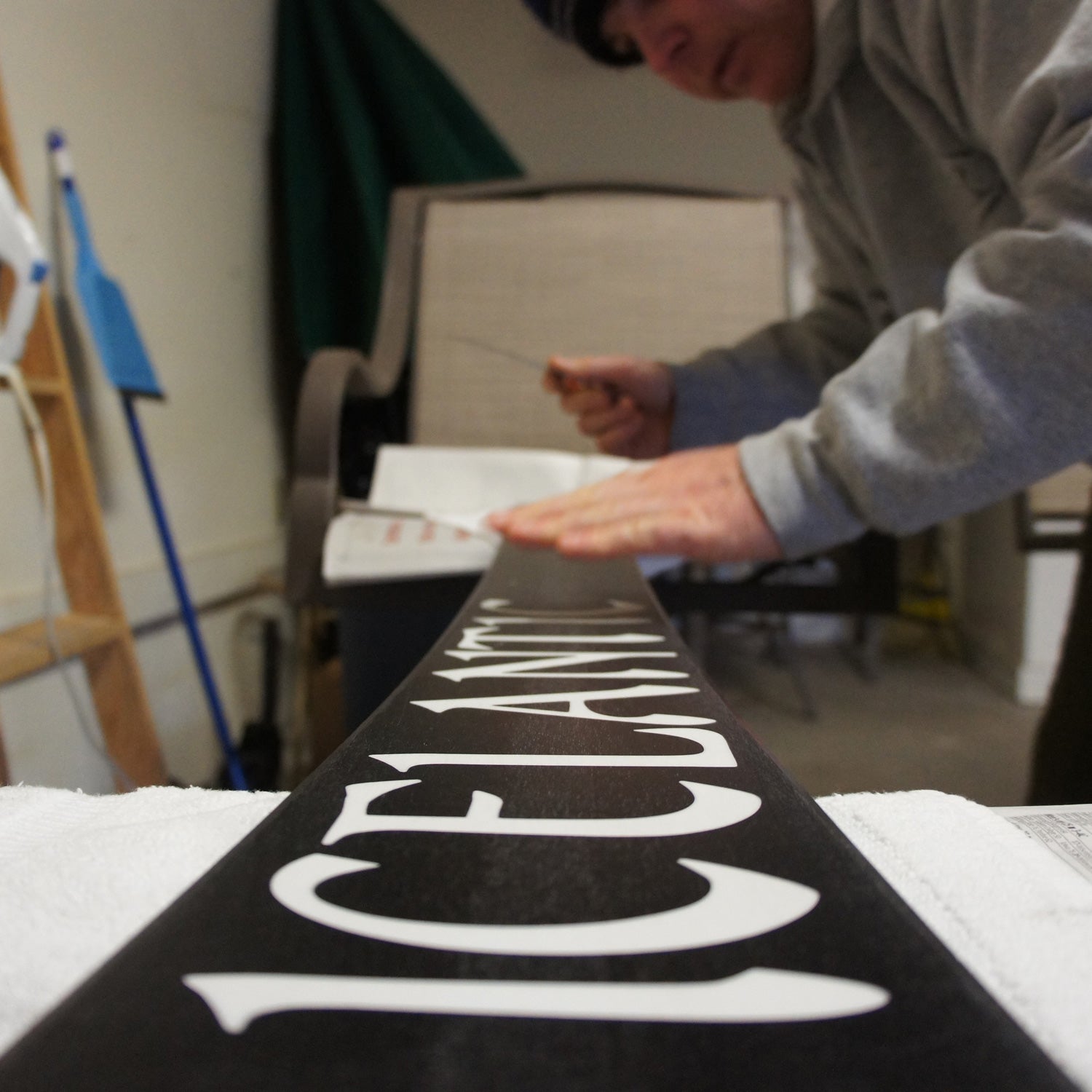Without wax, skis don’t glide properly and the bases eventually start to deteriorate. But don’t worry. Waxing your skis is relatively easy. For tips on how to do it, I called Todd Bracher, director of corporate compliance at . Not only has Todd been skiing for nearly three decades, but he also “knows more about 1.2-degree edge bevels, restructuring bases, and fluorocarbon waxes than anyone in the industry,” a friend told me. Here’s the science behind his art.
#1 Prep Your Skis
If your bases are dirty, the wax won’t adhere properly. Bracher likes to clean his skis by coating the bases with paraffin wax and then scraping it off. The paraffin grabs even the tiniest dust particles, ensuring you have a clean surface to work with. If you don’t have paraffin wax, just wipe the bases down with a tiny drop of citrus degreaser—don’t overdo it or you’ll dry out your bases. Next, Bracher finds a flat surface to work on. “It’s important that the ski is flat … otherwise it’s very difficult for your iron to glide smoothly across the base,” he says. You can rest your skis over two sawhorses or use flat-top kitchen chairs. Just cover the chairs and floor with multiple layers of newspaper to guard against dripping wax.
#2 Choose the Right Wax
If you want to keep things simple, Bracher suggests using an all-weather wax such as . If you want to get more specialized, you can buy waxes made for specific snow temperatures. For example, skiers in Montana, where the snow is dry and cold, might choose a wax like . Skiers in Oregon, where the snow is warmer and wetter, might use . Most waxes will list optimal temperature ranges on the wrapper.
#3 Use the Right Iron and Temperature
“You can get away with [an iron] from Goodwill, but ski-specific ones work better,” Bracher says. That’s because ski-specific irons hit exact temperatures that will melt wax but keep it from getting too hot, which can burn and ruin bases. He suggests an iron like the . Tip: If you do use a regular iron, start with a low- to mid-temperature setting and stop immediately if your wax begins smoking.
#4 Start Applying Wax
Ski waxes usually come in bar form, so Bracher holds the bar to the iron and drips it onto the base of his skis. He starts at the tip and moves down one side and back up the other, creating an elongated U shape. Then he gently glides the iron over the ski, from tip to tail, spreading the wax over the entire base. You’ve used too little wax if the iron doesn’t glide smoothly over the ski. You’ve used too much wax if big globs have dripped over onto the topsheet and bindings. Tip: Make sure to maintain an even pace when waxing. Don’t let the iron sit in one spot for too long or it’ll burn the bases.
#5 Scrape Your Skis
After the wax is evenly spread over the base, Bracher suggests letting it sit at room temperature for around an hour or until it’s cool to the touch. Then, with a sharp scraper like the , move from tip to tail to remove the excess wax from the bases. Bracher says you can tell the extra wax is off the bases when you can’t see the wax anymore. Next, he suggests running your fingernail over the edges to double-check all the wax is off those, too. If you have excess wax on the edges, your skis won’t turn properly. Tip: Make sure the blade is smooth, because divots will chew up your bases.
#6 Brush Your Skis
Finally, Bracher suggests brushing your skis, moving from tip to tail, with a nylon brush like the Radial from . The brush is another way to remove any excess wax and create a silkier ride.
#7 Keep Waxing Your Skis Throughout the Season
“It’s important to keep your skis constantly waxed,” Bracher says. If you ski every day, he says you should probably wax them every other day. If you ski less frequently, then just take note of when your skis feel sluggish or the bases look dry. It’s smart to apply wax every time you travel to keep your bases protected as they jostle around in your luggage.


